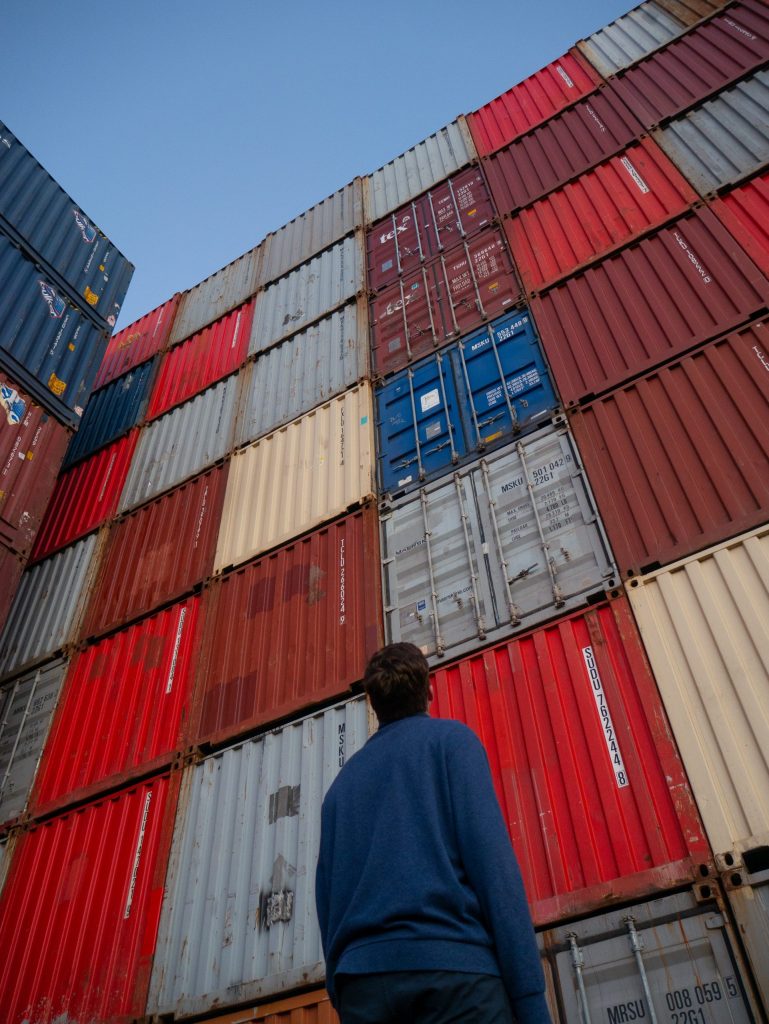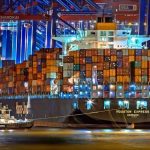Is What Carriers Are Doing to U.S. Agricultural Exporters Illegal?
U.S. agricultural exporters are getting screwed.
All the international shipping attention in the U.S. seems focused on importing rather than exporting. International shipping news sources, when talking about transpacific shipping, are almost always concentrated on eastbound shipments from Asia to the U.S. East Coast (USEC) and West Coast (USWC) rather than the other way around. Westbound freight rates from USWC to Asia, or any other U.S. export rates, are almost never even mentioned. Even in this blog, I write a great deal more about importing from China than exporting to Asia.
In the middle of this, U.S. agricultural exports, which were valued at $135.5 billion in 2019 according to Statistica, are being ignored. U.S. agricultural exports are not just ignored by the media, which doesn’t really matter that much, but they’re undervalued by shipping lines. Ocean freight carriers’ failure to prioritize U.S. agricultural exports does matter. Immensely.
With the COVID-19 pandemic, this year in particular has made it clear that carriers prioritize cargo coming from Asia to the U.S. over agricultural goods and other exports from farmers and U.S. shippers going to other countries. As the novel coronavirus spread from Wuhan, China to the rest of the world, carriers blank sailed (canceled) hundreds of sailings in anticipation of plummeting demand due to countries like the U.S. shutting down businesses in an attempt to slow the spread of the virus. The ocean freight carriers overcompensated, dropping capacity supply well below demand for moving cargo. The result was not only soaring freight rates but also a shipping container shortage, especially in Asia.
Carriers Withhold Containers From Exporters

The container shortage has caused carriers to rush into repositioning containers, shipping hundreds of thousands of empty containers back to Asia, withholding them from exporters, like those in the agricultural industry, who need to put their goods in those outbound containers.
Last month, Hapag-Lloyd went so far as to announce suspension of overseas agricultural exports from North America. In a Journal of Commerce (JOC) article by Bill Mongelluzzo on the topic at the time, Mongelluzzo alluded to how the restricting of U.S. exports to get empty containers back to Asia was spreading:
Peter Friedmann, executive director of the Agriculture Transportation Coalition, said many exporters, including hay, resin, and forest product shippers, are already seeing other carriers restrict their export liftings. However, he said he has not seen any formal announcements from carriers other than Hapag-Lloyd.
FMC Investigating Carrier Practices Against Exporters
Complaints against carriers from U.S. exporters, especially those within the agricultural industry, continue to mount, and the Federal Maritime Commission (FMC) has taken notice. Costas Paris wrote about it in a Wall Street Journal article on Friday (November 20th):
The U.S. maritime regulator will investigate whether shipping lines are impairing the ability of American farmers to reach foreign markets by holding back empty containers needed to export goods.
The Federal Maritime Commission said in a statement Friday that it would investigate actions by ocean carriers at the ports of Los Angeles, Long Beach and New York, as a crush of imports has triggered bottlenecks at the country’s biggest export gateways and buffeted inbound and outbound supply chains.
However, the FMC statement Paris writes about does not specifically mention farmers, agricultural exports, or the withholding of empty containers from U.S. exporters. To be fair, the statement was short, and export containers did at least get a mention when listing potentially unreasonable practices.
The potentially unreasonable practices of carriers and marine terminals regarding container return, export containers, and demurrage and detention charges in the Ports of Los Angeles, Long Beach, and New York/New Jersey present a serious risk to the ability of the United States to handle trade growth.
The practices on which the FMC has been focusing investigation are ones U.S. importers have been complaining about during the pandemic: unfair demurrage and detention fees. Concerns of exporters, though not explicitly defined, finally seem to have been added to the investigation last Thursday (November 19th) with a Supplemental Order expanding Commissioner Rebecca F. Dye’s authority “to investigate ocean carriers operating in alliances and calling the Port of Long Beach, the Port of Los Angeles, or the Port of New York and New Jersey.”
The Supplemental Order lists the type of practices or regulations from carriers that may be in violation of the Shipping Act as follows:
This includes, but is not limited to, practices and regulations related to demurrage and detention, empty container return in light of 46 C.F.R. § 545.5, and practices related to the carriage of U.S. exports.
Hopefully, withholding containers from exporters to send them back empty will not just be an afterthought in the FMC’s investigation.
Carriers File Rate Hikes on U.S. Agricultural Exports

Carriers prioritize Asia-U.S. shipments over U.S.-Asia shipments because they make much more money on them. Eastbound transpacific freight rates are several times more expensive than westbound transpacific freight rates. A large factor in this is agricultural goods, dominating U.S.-Asia shipments, have a much lower market value than the manufactured goods that dominate Asia-U.S. shipping.
To shrink this gap, but perhaps feeling to exporters like adding insult to injury, carriers filed rate increases on U.S. agricultural exports to Asia. At the beginning of the month, Bill Mongelluzzo reported in the Journal of Commerce (JOC):
US agriculture exporters are finding it harder to secure equipment as peak season nears, and now they face steeper all-inclusive costs for shipments to Asian customers, with little hope that new general rate increases (GRIs) of $100 to up to $1,000 per container will make equipment more available.
Spot rates in the eastbound trans-Pacific will still be at least four or five times higher than the westbound rates even with the GRIs, so carriers will still prefer to ship empty containers back to Asia as quickly as possible to be refilled with US imports, rather than delaying the return of the containers for weeks to haul low-paying agricultural exports to Asia.
Increased freight rates certainly do not guarantee better service from carriers. In fact, all year as freight rates have climbed and climb, service and reliability from carriers have declined. On top of that, such large cost increases could be catastrophic for agricultural exporters. It’s broken down as follows in Mongelluzzo’s article:
Agricultural representatives said that if carriers implement a $1,000 per-FEU GRI to make it worth their while to reposition empty containers in the interior, that could increase the transportation cost so high that it drives exporters out of the international marketplace.
“They can’t absorb a $1,000 increase,” Friedmann said.
And if agricultural exporters cannot serve the markets they have worked hard to develop — either because freight rates are too high or they can’t secure the equipment they need — they could lose those customers for future business when the market returns to normal, Steenhoek said.
For the long-term health of the agricultural sector, carriers need to stop screwing over U.S. agricultural exporters.




